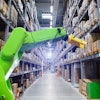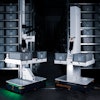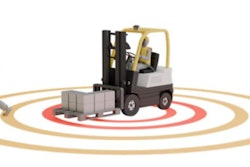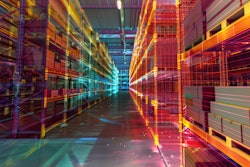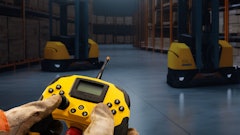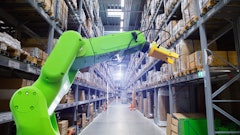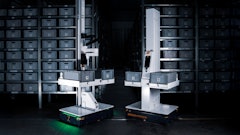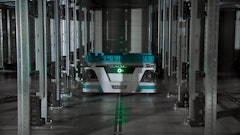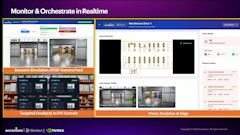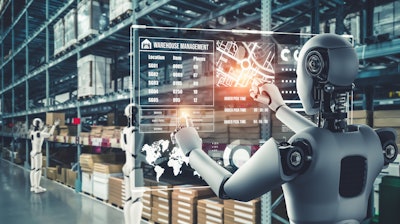
The days of simple brick-and-mortar warehousing solutions are far behind us. Today, efficiencies are found through the integration of advanced technologies, real-time data reporting is both expected and necessary for smooth operations, and the digitization of processes helps avoid impacts from human error.
For companies looking to step into the future of warehousing, where should they start? What solutions should they look for? What’s going to help their business evolve to meet ever-changing supply chain demands?
Start by understanding the technology that is available today. AI-powered inventory management, for example, offers predictive analytics for demand forecasting. This omits surprises and lets you sufficiently prepare to meet demand without generating too much waste. These computer system inventory management platforms can look at past sales, check trends, notice patterns, and then use AI to take all of that in context to predict future demand and inventory requirements. This saves money, avoids customer disappointment, and eliminates the need for guesswork and manual tracking.
Real-time inventory tracking and automatic stock replenishment tools are just another way to make sure you stay prepared and meet timelines. Not only that, but tracking current inventory in real-time rather than manually increases security and avoids costly losses by knowing exactly when inventory is entering and exiting a facility. Digitization technology such as radio frequency identification (RFID), barcode scanners, and others, improves accuracy and avoids losses. If this technology isn’t already integrated into a warehouse’s day-to-day, it’s an absolute must-have.
Automated handling is another option to look at: using robotics and autonomous vehicles in warehouse operations. This technology has wide-ranging applications, removes operational inefficiencies, and reduces the amount of manual labor needed – a critical benefit considering the labor shortages the industry is facing. Between an aging warehouse workforce who have arrived at or are approaching retirement, high rates of turnover and burnout, changing workforce preferences in younger generations, and skill gaps among potential employees, the industry is in desperate need of more automated processes.
When considering industry challenges such as the labor shortage, it presents even stronger arguments for implementing smart warehousing solutions. Automation not only fills in labor gaps and maximizes productivity, but can adjust accordingly to fluctuating demand for ultimate adaptability and business efficiency. Cloud-based solutions provide seamless transparency, providing real-time insights into visibility gaps within the supply chain.
These solutions act as an all-seeing dashboard: one that can show you exactly where anything is within a warehouse, explain what’s going wrong or what could go wrong (i.e., late deliveries, bottlenecks, missing product, etc.), and help you fix those problems by making optimization suggestions. Not only that, but being a cloud-based solution means that all it needs to work is the internet, and it can be accessed outside of an individual warehouse’s location.
And it’s not just about what happens inside of a warehouse, but just as important is connecting upstream and downstream with suppliers and customers to create a cohesive and well-orchestrated supply chain. You can integrate all of the advanced technology, but until you connect all of the links in the chain, you won’t see the best possible results.
In days past, manufacturing, transportation, and warehousing can often exist in silos. However, as a result, information is slow to transfer and easy to lose, and communication breakdowns can result in lost inventory, timeline delays, and missed opportunities. Integrating warehouse models with the entire supply chain can solve these issues in a few ways:
● Improving system-to-system communication: Warehouse inventory systems are able to talk directly to manufacturers, transporters, and retail forecasters to improve inventory and prepare for challenges.
● Data sharing: Vendors, logistics partners, clients, and more can all access real-time data, including order statuses and precise shipping tracking so that everyone remains informed and expectations are managed.
● Improved decision making: If demand for a particular product spikes unexpectedly, systems can make decisions such as reorders or stock reroutes to solve potential problems quickly and appropriately.
While integrating advanced technologies into warehouse solutions and the entire supply chain can feel overwhelming, ultimately, the investment will return tenfold through cost reduction and efficiency gains. Automation and digitization minimize waste, improve storage optimization, and increase order fulfillment speed. Connecting with the supply chain keeps customers happy and improves vendor and client relationships. All of this leads to an enhanced customer experience with faster delivery times, improved accuracy, and overall seamless operations. Smart warehousing is no longer just a future-facing idea, but a necessity for success today.

